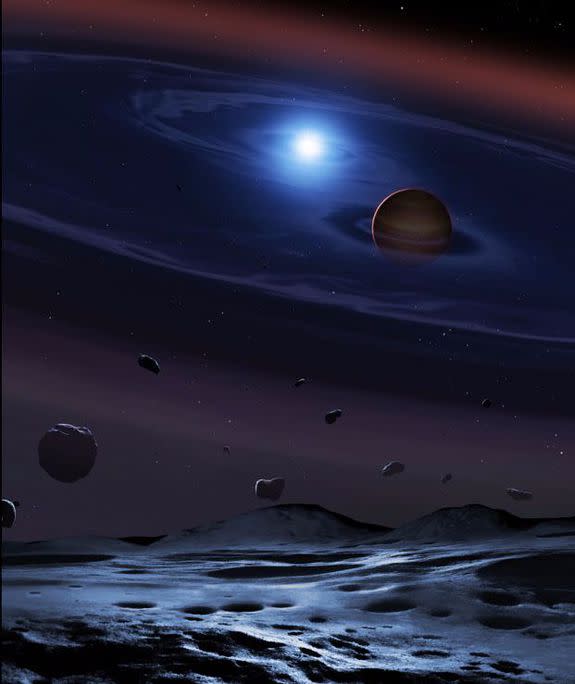There might be a real-life Tatooine in this distant star system

For the first time, scientists found evidence of a rocky planetary system surrounding a double sun.
Yes, like Luke Skywalker's home in Star Wars.
While many of these double star systems — often referred to as "Tatooine-like" — have been found before, this marks the first time scientists have found evidence of rocky planetary material in one.
SEE ALSO: Seven Earth-sized planets orbit an alien star only 40 light-years away
The star system, which is located about 1,000 light-years from Earth and named SDSS 1557, is composed of a white dwarf star and a brown dwarf — an object too small to be considered a full-fledged star, but too large to be a planet.
Those two bodies are orbited by what appears to be rocky material that might be a group of asteroids that have broken apart.
This suggests that maybe, just maybe, a real-life Tatooine-like exoplanet is lurking out there somewhere, though they haven't found any rocky worlds in this system yet.

Image: MARK GARLICK, UCL, UNIVERSITY OF WARWICK AND UNIVERSITY OF SHEFFIELD
"Building rocky planets around two suns is a challenge because the gravity of both stars can push and pull tremendously, preventing bits of rock and dust from sticking together and growing into full-fledged planets," Jay Farihi, co-author of the study published in the journal Nature Astronomy, said in a statement.
"With the discovery of asteroid debris in the SDSS 1557 system, we see clear signatures of rocky planet assembly via large asteroids that formed, helping us understand how rocky exoplanets are made in double star systems."
The scientists behind the discovery didn't actually know that SDSS 1557 was a binary system at first.
They only found the brown dwarf companion to the white dwarf after looking at the system with different instruments.
"The brown dwarf was effectively hidden by the dust until we looked with the right instrument, but when we observed SDSS 1557 in detail we recognised the brown dwarf's subtle gravitational pull on the white dwarf," study co-author Steven Parsons said in the statement.
The researchers also found that the white dwarf's atmosphere is actually polluted by rocky, metal-rich material falling into the star from the surrounding system.
Until now, all of the planets found in these types of systems have been gas giants like Jupiter, so actually finding evidence of rocky material close to a host star is pretty cool indeed.
